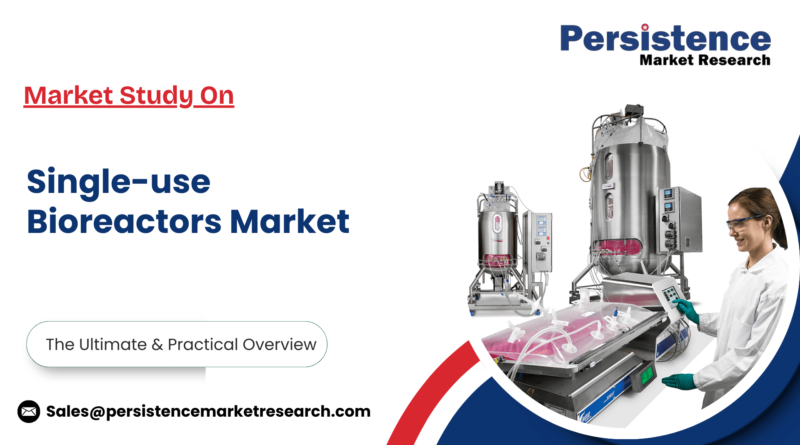Single-use Bioreactors Market Set for Rapid Growth, Forecast to Reach $10.8 Billion by 2031
The global single-use bioreactors (SUBs) market is poised for significant expansion over the next decade, as the biopharmaceutical industry accelerates its adoption of flexible and cost-efficient manufacturing technologies. According to recent market projections, the sector will grow at a compound annual growth rate (CAGR) of 15.8%, increasing from a value of US$3.8 billion in 2024 to US$10.8 billion by 2031.
This surge highlights how the life sciences industry is transitioning away from traditional stainless-steel systems and embracing disposable technologies that streamline production, reduce contamination risks, and support faster development of biologics, vaccines, and cell-based therapies.
A Shift Toward Disposable Manufacturing
Single-use bioreactors have transformed biopharmaceutical production by offering an alternative to fixed stainless-steel equipment. Unlike conventional systems that require extensive cleaning, sterilization, and validation, SUBs use pre-sterilized bags and components designed for one-time use. This shift eliminates the time and cost associated with cleaning procedures and reduces the risk of cross-contamination between batches.
Biopharma companies, particularly small and mid-sized firms, are increasingly leveraging SUBs to enhance operational flexibility. For contract development and manufacturing organizations (CDMOs), which serve multiple clients, the ability to quickly change over production lines without lengthy downtime is a major competitive advantage.
Industry experts note that these systems are especially valuable during the early phases of drug development and clinical trials. By enabling smaller-scale, cost-efficient batches, single-use technologies allow manufacturers to produce experimental therapies faster, thereby accelerating the pipeline of innovative treatments.
Market Drivers: Biologics, Vaccines, and Cell Therapies
The key driver behind the rapid growth of the single-use bioreactors market is the increasing global demand for biologics. Monoclonal antibodies, recombinant proteins, and other biologic drugs are dominating pipelines across leading pharmaceutical companies. These therapies require precise and scalable manufacturing systems, making SUBs an attractive solution.
Another major factor is the sustained global focus on vaccines. The COVID-19 pandemic accelerated investment in flexible biomanufacturing platforms, and SUBs played a central role in scaling up vaccine production. Moving forward, similar technologies are expected to underpin vaccine development for influenza, RSV, and emerging infectious diseases.
Cell and gene therapies represent yet another powerful growth engine. These therapies, which are often personalized and produced in smaller volumes, require adaptable systems that can meet regulatory and quality standards without excessive infrastructure. SUBs meet these needs by providing rapid setup, lower capital investment, and scalability for niche therapies.
Advantages Driving Adoption
Several advantages explain why single-use bioreactors are outpacing traditional stainless-steel equipment in terms of adoption:
-
Cost Efficiency – Eliminating cleaning and sterilization lowers operating expenses and water usage. Companies can save millions annually by reducing utility costs and validation processes.
-
Speed to Market – Faster setup and changeover times shorten production cycles, enabling quicker clinical trials and commercial launches.
-
Flexibility – Systems can easily scale from laboratory research to pilot studies and commercial production. This adaptability is particularly vital in contract manufacturing environments.
-
Reduced Contamination Risk – Pre-sterilized components minimize the chances of microbial contamination, a critical factor in biopharmaceutical quality assurance.
-
Sustainability Benefits – Although disposables generate plastic waste, they dramatically reduce water and chemical usage required for cleaning, aligning with sustainability goals of many organizations.




